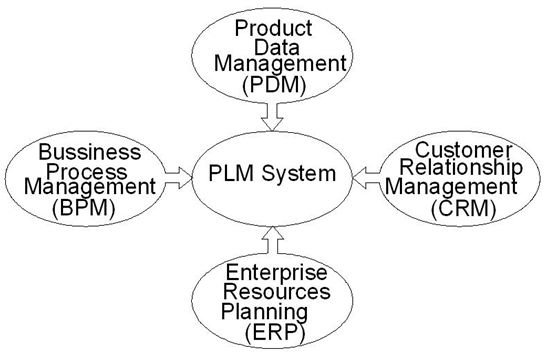PDM vs PLM Systems: Difference and Similarities
What is a PDM system?
In the simplest terms, Product Data Management or PDM system serves as a product and process knowledge repository which promotes secure data exchange and integration among all the stake holders of the value chain- including design engineers, project managers, sales mangers, users, and QC managers.
A PDM system is a secure vault for storing CAD models, drawings, BOM, and other metadata of the product. The picture below shows a typical PDM system structure. (Click the image to enlarge.)
What is a PLM system?
Product Lifecycle Management or PLM is a business strategy which deals with managing the entire lifecycle of a product by integrating multiple software tools, database, and management techniques. The life cycle of a product consists of different stages from its conception, design, manufacturing, usages, and disposal. A broad level of involvement and integration among various departments of the organization are required for successful implementation of a PLM system. PDM system is one of the components of a PLM system. A simple representation of some of the components of a PLM system is shown below:
Common functions both PDM and PLM system performs
- Document management: CAD models, drawings, and metadata of a product are stored either in a central or a distributed vault. Once product data and other information go to vault it can be accessible by authorized users in predefined format.
- Process and work flow management: PDM and PLM systems gives required permissions to required person and communicate action items among its stakeholders effectively. Thus ensure process work flow.
- Product structure management: PDM and PLM systems links parts with Bill Of Materials (BOM). Users can see alternative parts and its business impacts easily through these systems.
- Part Management: PDM and PLM systems emphasis reusability and standardizations of components.
Where PLM is different
- PLM is broader: PLM has broader level of integrations across various departments, spread across different geographic locations, using multiple CAD tools and dealing with large range of products, whereas PDM deals with mainly with CAD related product data.
- Development platform: PLM is developed on a web based platform whereas PDM system does not use a web platform.
- Cost: The cost of PLM system is very high compared to a PDM system. Thus implementation of PLM is justified only for large multi-location organizations.
- Stakeholders: The numbers and layers of stakeholders are manifold in case of PLM systems. Product life cycle information is available to various stakeholders in required predefined format.
Conclusion
Product Data Management (PDM) system is a subset of Product Lifecycle Management (PLM) system. PDM systems mainly handle CAD related product data. Design departments are the prominent input providers for a PDM system. PLM system requires organizational level involvement and integrates other information systems of a organization.
